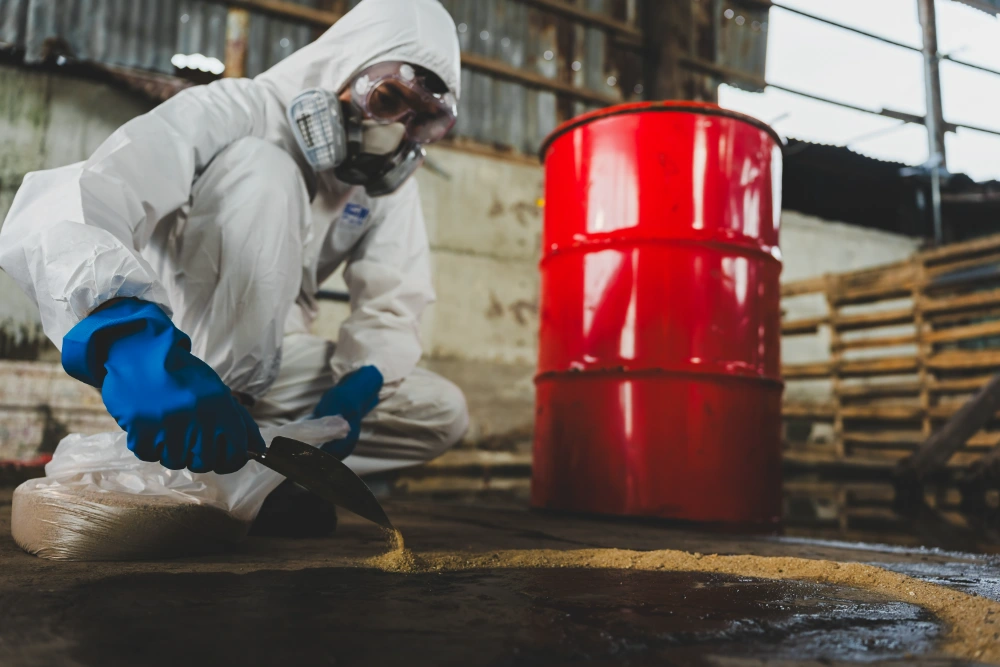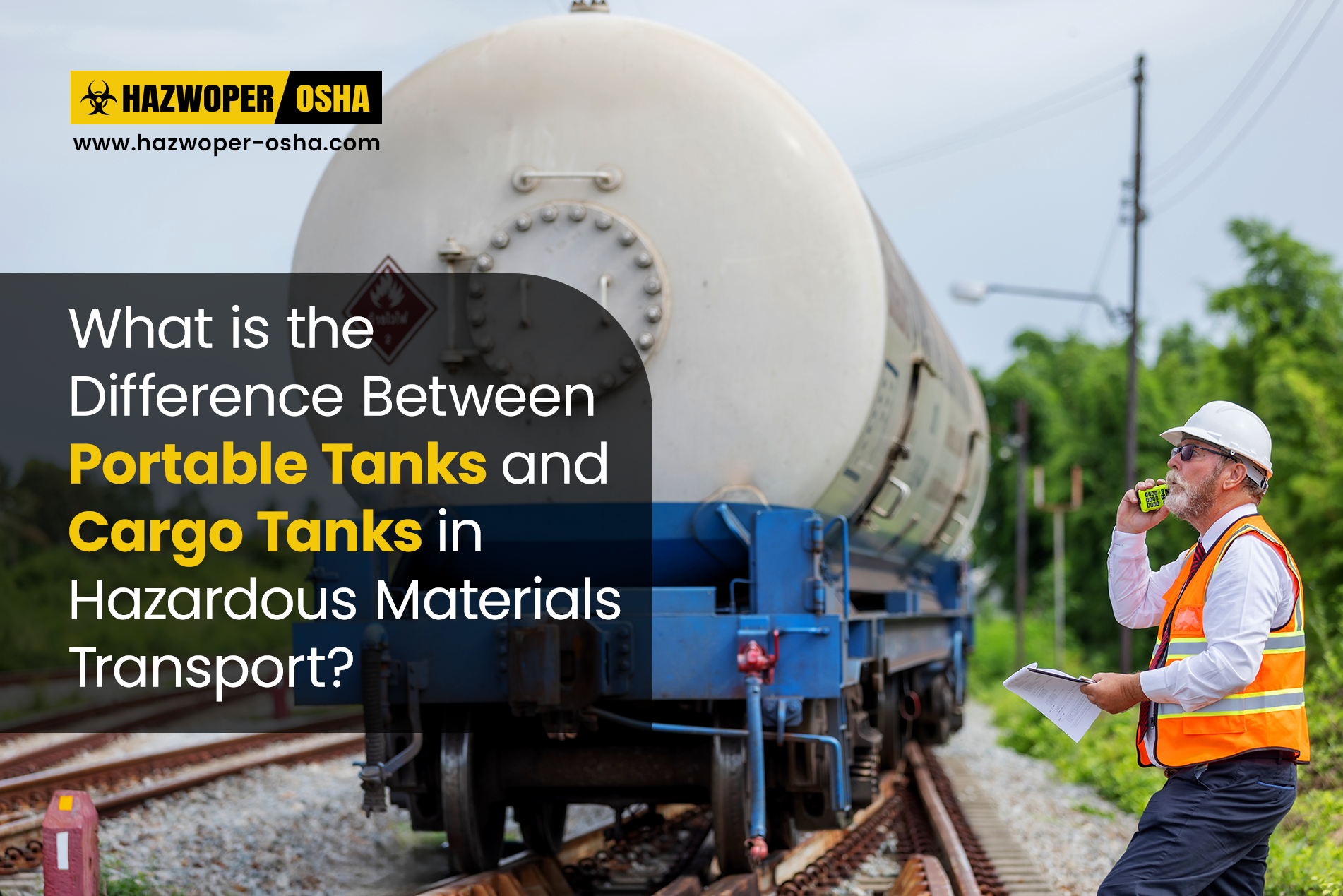California Hazmat Training

DOT Hazmat Transportation Training
Transportation of hazardous materials within States, across States, and internationally is guided by strict regulations governed by the United States Department of Transportation (DOT). The Pipeline and Hazardous Materials Safety Administration (PHMSA) enforces the DOT’s Hazardous Materials Regulations (HMR) and guides U.S. citizens to comply with such standards to ensure the safety of the people, property, and the environment.
Hazmat Transportation Training Regulations in California
The state of California is renowned as a strict enforcer of standards and regulations that support the safety and health of employees. On this premise, California expects employers and employees transporting hazardous materials (hazmat) via highway, rail, air, and water, to follow the stringent Hazardous Materials Regulations as developed by the DOT and enforced by PHMSA.
The California Department of Motor Vehicles (DMV) requires drivers of hazmat to have a commercial driver's license (CDL) with an “H” endorsement in line with CFR, Title 49 §383.5, before driving any size or type of vehicle transporting hazmat. To get this “H” endorsement prospective drivers of hazmat must undergo and pass a knowledge test about the regulations and requirements related to the transportation of hazardous materials. Additionally, drivers are also required to have appropriate knowledge of the DOT HMR. This requires drivers to undergo additional training that provides in-depth details of all aspects of hazardous materials transportation including, hazmat packaging, loading, labeling, marking, placarding, and securing awareness training. To fulfill these safety training requirements, hazmat drivers can enroll in the DOT Hazmat Transportation 10-Hour Advanced General Awareness Training course that is specifically designed to give an in-depth understanding of the U.S. DOT’s Hazardous Materials Regulations (CFR Title 49 Parts 171-180).
The California DMV also requires all vehicles transporting hazmat to display warning signs as specified by the DOT HMR. These diamond-shaped warning signs are known as “placards”. Our DOT hazmat transportation 10-hour online training course has a module dedicated to explaining the use of DOT placards on trucks, tankers, rail cars, freight containers, cargo transport units, or aircraft unit load devices. On completion of the 2-lesson module, learners will be able to identify and select the appropriate placards for specific classes of hazardous materials and any exceptions to these requirements.
Which Hazmat Transportation Training Course is Right for Me?
According to the explanation given above, hazmat drivers need to have good knowledge about the hazardous materials they are transporting. Thus, as mentioned, in addition to the knowledge test to receive the “H” endorsement on their CDL, they will also need added training to understand the pertinent elements of the DOT HMR.
Remember! As a driver of a tank car or a truck transporting hazardous goods via highway, you must be aware of the type of hazmat you have in the back of the vehicle you drive. To do this safely, you may need to know the correct packaging requirements for different types of hazardous materials, you may also need to know the hazard classification of such hazmat, and if the hazmat packages being transported have the proper labels and markings. Furthermore, as the driver of a hazmat vehicle, it is important that you understand the placarding requirements so that you can be sure that other drivers beside and behind you get some idea that you are transporting hazmat. Such placards are also important in case of emergencies or accidents occurring as it gives proper information to emergency workers such as medical personnel and firefighters. Additionally, knowing the security requirements when transporting hazmat is critical in today’s uncertain times for the safety of all.
The training requirements for other hazmat workers are dependent on the work they do while preparing hazardous materials for transportation. For instance, a person who is only involved in the packaging part of the value chain may require in-depth knowledge of hazmat packaging, in addition to general knowledge about the HMR, the hazard classifications, and other topics such as hazmat labels and markings. For personnel with specific requirements, we offer a 4-Hour DOT Hazmat Transportation General Awareness Training course together with a choice of function-specific training for the preparation of shipping papers, and specific requirements for packaging, placarding, marking, labeling, etc. Click here to review all DOT Hazmat Transportation function-specific training courses.
However, as a manager of a hazmat shipping department or a supervisor of hazmat cargo, we consider having more knowledge to be better than having less. Hence, it is recommended that personnel in high positions and those who are responsible for a team should receive comprehensive training on understanding the DOT’s HMR by enrolling in our 10-Hour Dot Hazmat Transportation training course.
Occupational Health and Safety in California
California also leads the way when it comes to occupational safety and health. As one of the 22 States operating an OSHA State Plan, California has more stringent regulations when employees work with hazardous waste, hazardous materials, and other hazardous substances.
California OSHA (Cal/OSHA) Regulations
California has a dedicated OSHA State Plan covering the safety and health of both the private sector and state and local government workers. Popularly known as Cal/OSHA, the California OSHA State Plan is rigorous and requires employers to make every effort to meet OSHA compliances. According to records, Cal/OSHA consistently surpasses its safety and health inspection goals proving the administration’s dedication to protecting the millions of men and women employed across the State.
Besides following the Federal OSHA standards (amended to suit the stringent requirements in line with the Cal/OSHA State Plan), Cal/OSHA has developed several State-specific standards for various topics and industries. These include:
- Toxic Chemical Handling and Exposure
- Agriculture
- Repetitive Motion Injuries
- Child Labor
- Heat Exposure
- Noise Exposure
- Injury and Illness Prevention Program
- Aerosol Transmissible Diseases
- Petroleum Drilling and Production
- Petroleum Refining, Transport, and Handling
- Workplace Violence Prevention in Health Care
Training to Comply with Cal/OSHA
Like Federal OSHA, Cal/OSHA also accepts online, virtual instructor-led training, classroom training, and on-site group training options for employers to train employees. These training courses are also required to be supplemented by on-the-job training so that employees better understand the workplace-specific processes and procedures implemented by their employer.
When enrolling any employees in OSHA safety training courses, employers should ensure these safety training courses meet the training requirements specified in Cal/OSHA and comply with the Cal/OSHA standards.
Often, it is aspects such as permissible exposure limits (PELs) for hazardous substances such as acetone, ammonia, and sulfur dioxide (among others) that differ. In the case of the Bloodborne Pathogens Standard, Cal/OSHA requires more information regarding the selection and evaluation of procedures for sharps and needles and a more detailed injury report. When working on scaffolding Cal/OHSA has enhanced the requirements of guardrail systems, while Cal/OSHA has stricter rules regarding fall protection with the need for fall protection systems when working at lower levels compared to Federal OSHA. Furthermore, as Cal/OSHA has State-specific standards, these must also be complied with.

 EN |
EN |  ES
ES

































































































































